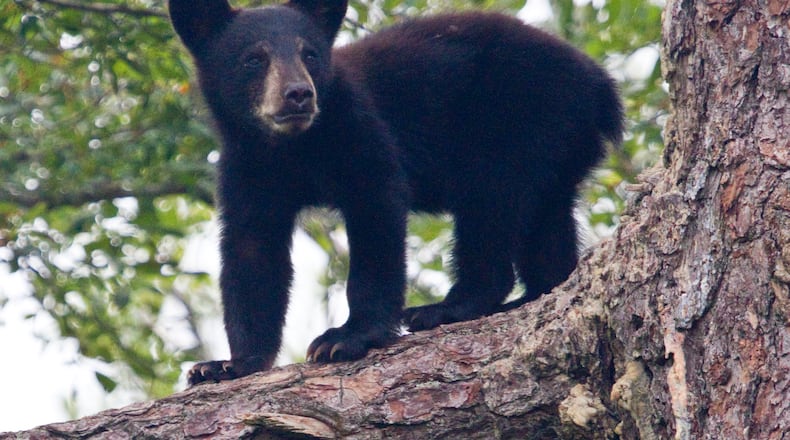Between now and mid-February is prime birthing time for one of Georgia’s most iconic wild creatures, the black bear.
Holed up in dens in hollow trees, caves, rocky crevices, brush piles and other winter hideaways, groggy female bears weighing as much as 300 pounds have begun giving birth to tiny babies weighing less than a pound. On average, two cubs, blind and entirely dependent on their mother, will be born in each litter.
Wildlife biologists estimate that about a third of Georgia’s entire population of 4,000 black bears (recently revised downward from 5,000) is composed of cubs at any one time. Georgia’s bears occur in three distinct populations, with the largest number in North Georgia’s mountains. Smaller populations are in the Ocmulgee River watershed in central Georgia and in and around the Okefenokee Swamp.
Beginning life in their mother’s winter den, newborn cubs grow and develop rapidly, nourished by their mother’s rich milk containing 33% fat. (Contrary to popular belief, mother bears will wake up from winter slumber to give birth and respond to their babies’ needs.)
The cubs first leave the den at 2 months old and are weaned at 6-7 months of age. Around 8 months old, the cubs weigh about 15-20 pounds. They may stay with their mother — even denning with her a second winter — until they reach about 18 months of age. At that time, the mother will drive them away, forcing them to fend for themselves. Generally, a black bear may live eight to 15 years.
Due to the extended care of their young, female bears produce a litter only every other year. A female who has finally run off her cubs may then breed again. Mating takes place in midsummer, but fetal development will occur mainly in the last two months of pregnancy after the fertilized egg implants in the uterus in November — a reproductive process called delayed implantation.
IN THE SKY: From David Dundee, Tellus Science Museum astronomer: The moon is new Saturday and will be a thin crescent low in the west just after dark on Sunday evening. At that time, Venus, Saturn and the crescent moon will appear close together. Mercury is low in the east just before sunrise. Mars is high in the east at dark. Jupiter is in the south at sunset and sets about four hours later. It will appear near the moon on Wednesday night.
Charles Seabrook can be reached at charles.seabrook@yahoo.com.
About the Author
Keep Reading
The Latest
Featured


